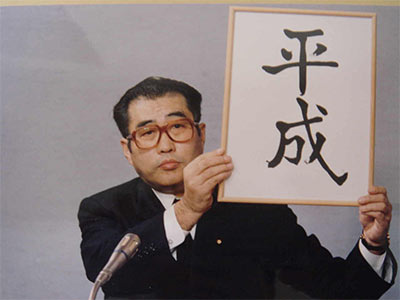Do you know what year it is? I often don’t, thanks to the Japanese custom of counting years according to the reign of the Emperor in power. The current era of Heisei (translatable as “Having Achieved Maturity and Peace”) started in 1989, when Emperor Akihito ascended to the throne, making this year 平成 Heisei 25. Heisei is the fourth era since Japan became a “modern” nation; the others were 明治 Meiji (“Enlightened Rule,” 1868-1912), when Japan began to emulate the West for the first time; 大正 Taisho (“Great Righteousness,” 1912-1926), which saw a terrible earthquake that killed 140,000 in Tokyo; and the long and eventful 昭和 Showa (“Brilliant Harmony,” 1926-1989) period, a time of war, rebuilding and eventually, toilets that wash your butt for you. When you live in Japan for a while, you naturally come to memorize certain events in the Japanese era system: for example I was born in Showa 43, I came to Japan in Heisei 3, and started J-List in Heisei 9. Japanese Emperors are always referred to by their era name in Japan, e.g. Emperor Showa for Hirohito, Emperor Heisei for the current Akihito, and it’s quite common for Japanese to have no idea what their Emperor’s name is. Considering how flat and dreary the Heisei period has been economically for Japan, I’d like to see them choose a name with a bit more kick to it when the current Emperor passes on.

Mr. Obuchi declares the Heisei era in 1989. He later died in office of a stroke, the poor guy.














